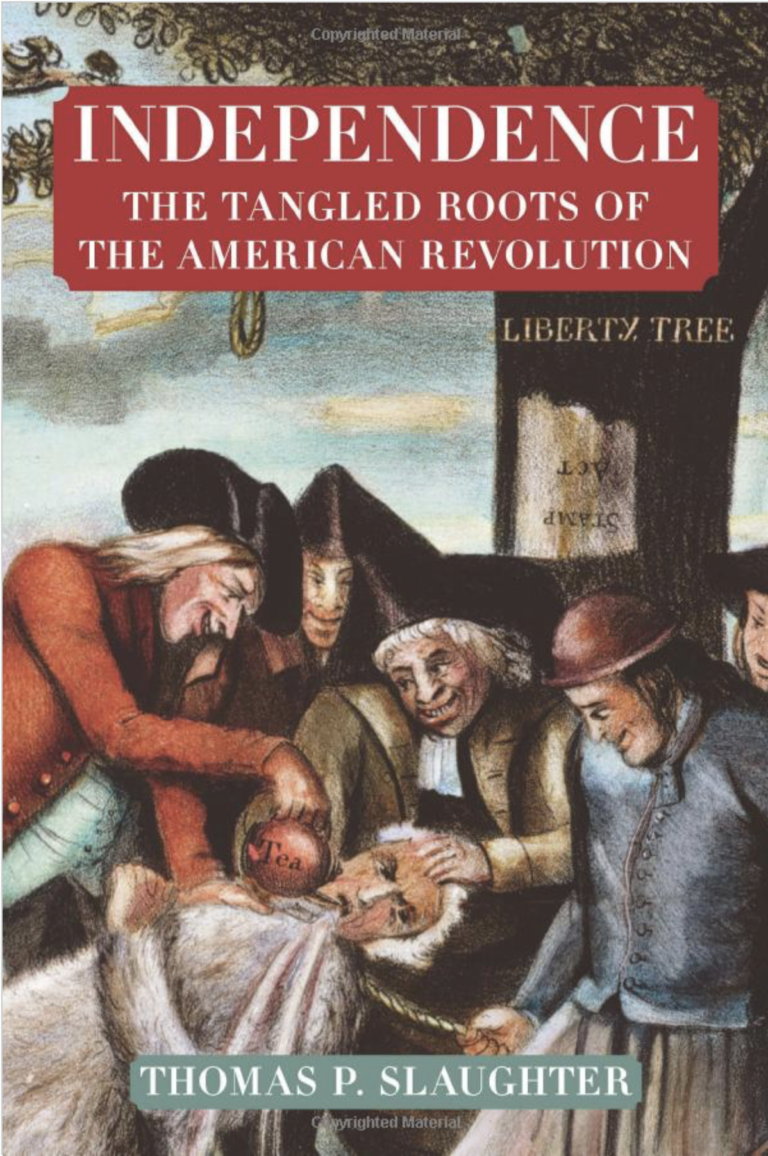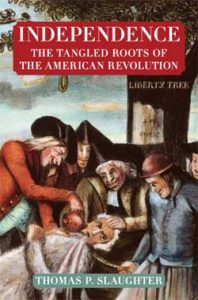Whose Side Are You On? Or, Pitt and the Pendulum

Blessedly, there was comparatively little cant at this conference, arguments about which side was morally bankrupt, or patriotic celebrations of the Founding Fathers and texts such as those we see on the best-seller lists. There were, however, a couple dogs that did not bark, and every such gathering presents a moment to note the current location of the historiographic pendulum. There was not a single paper that addressed causation, and only one presenter (Ned Landsman) looked back decades before the Revolution to its history. At other historiographic moments, of course, Prime Minister William Pitt’s decision to fight the Seven Years War in North America and across the globe, and his decision to keep Canada in the peace settlement of 1763, thereby reversing the British Empire’s decision at the end of the War of the Austrian Succession fifteen years earlier, would have taken center stage. Not this time, though; causation and deeper history were not discussed.
There was some discussion of the waging of the war, which might have benefitted from contextualizing the bloodshed historically, but is an essential part of the story nonetheless. Per capita deaths were higher in the American Revolution than those suffered in any subsequent American war, the quasi-exception being among the Confederates who fought against the United States in the Civil War. This means a higher percentage of the living suffered the loss of a loved one, neighbor, or acquaintance in the Revolution than in any American war since. It was an ugly war; there were executions, and soldiers were tortured, homes were pillaged, and limbs were lost. Many never recovered. At no point did half of the American population support the war effort of what became the winning side.
Of course people fought for what they perceived to be their own interests; of course they fought with an eye to defend what they had and in the hope of achieving and acquiring more or being restricted less. Of course violence begat violence and the longer the war continued the more brutal it became. No side—at least for or against; I happen to have a soft spot for some of the morally driven neutrals—was more principled and no side was less so as a group. Americans fought righteously, and with their eyes on the main chance. They fought for themselves, for their comrades in arms, for their families, for their communities, and with God on their side. Of course they did. Don’t we always?
American politics at the time was plagued by corruption, provincialism, and dreams of conquest, and it was led by some brilliant and principled men, although not men who necessarily shared each other’s principles or many of ours, whatever yours are. Obviously, the past was not the present, for good and for ill. The Revolutionaries were people, and they were not the same people that we are two-and-a-half centuries later. So, let it go. It is history—important then and important to help us understand now, but the Revolutionaries were neither saints nor devils, worthy of worship nor deserving of our disdain and dismissal. We should try to understand them as humans just like us. Were men of wealth less moral than the impoverished were (or would have been if social roles were reversed)? Wrong question; move on. How did the world look to people of different races, ethnicities, regions, genders, classes, and religious beliefs? Good question. It is worth asking about perspectives and what informed and affected them. With whom do you more closely identify? Whom do you admire, revile; whom do you fail to comprehend? Fine, if those questions appeal to you, but be sure to answer modestly and with an appropriate seasoning of self-doubt. Try your best either to avoid anachronism or to wallow self-consciously in it; there is no middle ground, and you will fail in any event, whichever path you take.
Do you assume that people back then were inspired by rational, conscious choices that were fully informed and dispassionate? Really? I have heard it said that all historical actors are victims, in the sense that they have incomplete knowledge and less than full capacity to act independently of others. Thomas Hutchinson was not a victim in the same ways that Thomas Jefferson’s slaves were, so “victim” is a poor choice of words, but I take the point. It is important to try to understand Hutchinson, Jefferson, and the slaves from their own points of view.
People get swept up by events, by circumstances, by tides against which you cannot swim. You can try to ride it out, you can try to swim out the side of the current, or you can drown. You may drown in any event, but can you choose rationally? It is hard to say what you would do until you feel yourself in the death grip of a natural force against which you are powerless.
Perhaps someday historians will realize that the great masses of eighteenth-century humanity were not college professors, and did not think, reason, and act on the basis of what they read in books. Actually, we delude ourselves that college professors are rational and inspired by ideas, but we should not assume that George Washington or his rank-and-file were similarly deluded about themselves. As the late Rhys Isaac observed,
Historical understanding has too long been enthralled by the assumptions, preferences, and definitions of intellectuals—a high priesthood of which historians themselves form a part. In highly literate milieus the assumption is unquestioned that significant communication is conveyed by words, especially by written words, and above all by printed words. Yet one may ask: How many people in our own society—among the elite even—arrive at articulate verbal statements of the meaning of their own lives? For all persons such statements are most often implied in patterns of behavior.
The corollary assumptions against which Isaac advised are that ideas are formed in a linear fashion. Historical figure X reads political theorist Y and therefore writes text Z, which (somehow) leads whole armies to form and invade an “enemy.” There is often in the literature on the Revolution no recognition of pre-cognitive influences, countervailing forces, external stimuli, irrational and/or personality-based preconditions, or the dominance of inconsistency over consistency in human behavior. It’s as if few historians of the Revolution have ever parented teenagers or had a spouse point out his inconsistencies. There is often no delving beneath words in the literature on the Revolution; the words are relied on by historians as prima facie evidence of their meanings. “Common sense” and literal readings are the resort, the method, the underlying and generally unexamined assumptions of such analyses. The intervening role of those dimensions of the historian’s reading also goes unrecognized in such an “objective” approach to ideas. More truly, the “objectivity” is a mask that deceives the historian himself, who seldom penetrates his own self-interested reading, never mind the self-interests of the historical figure, unless to dismiss it. No, I’m not headed for “The Mask of the Red Death;” that would be silly.
Further Reading:
To read Rhys Isaac’s full work, see The Transformation of Virginia, 1740-1790 (Chapel Hill, N.C., 1982).
This article originally appeared in issue 14.3 (Spring, 2014).
Thomas P. Slaughter is Arthur R. Miller Professor of History at the University of Rochester and author of Independence: The Tangled Roots of the American Revolution (Hill & Wang, 2014).
